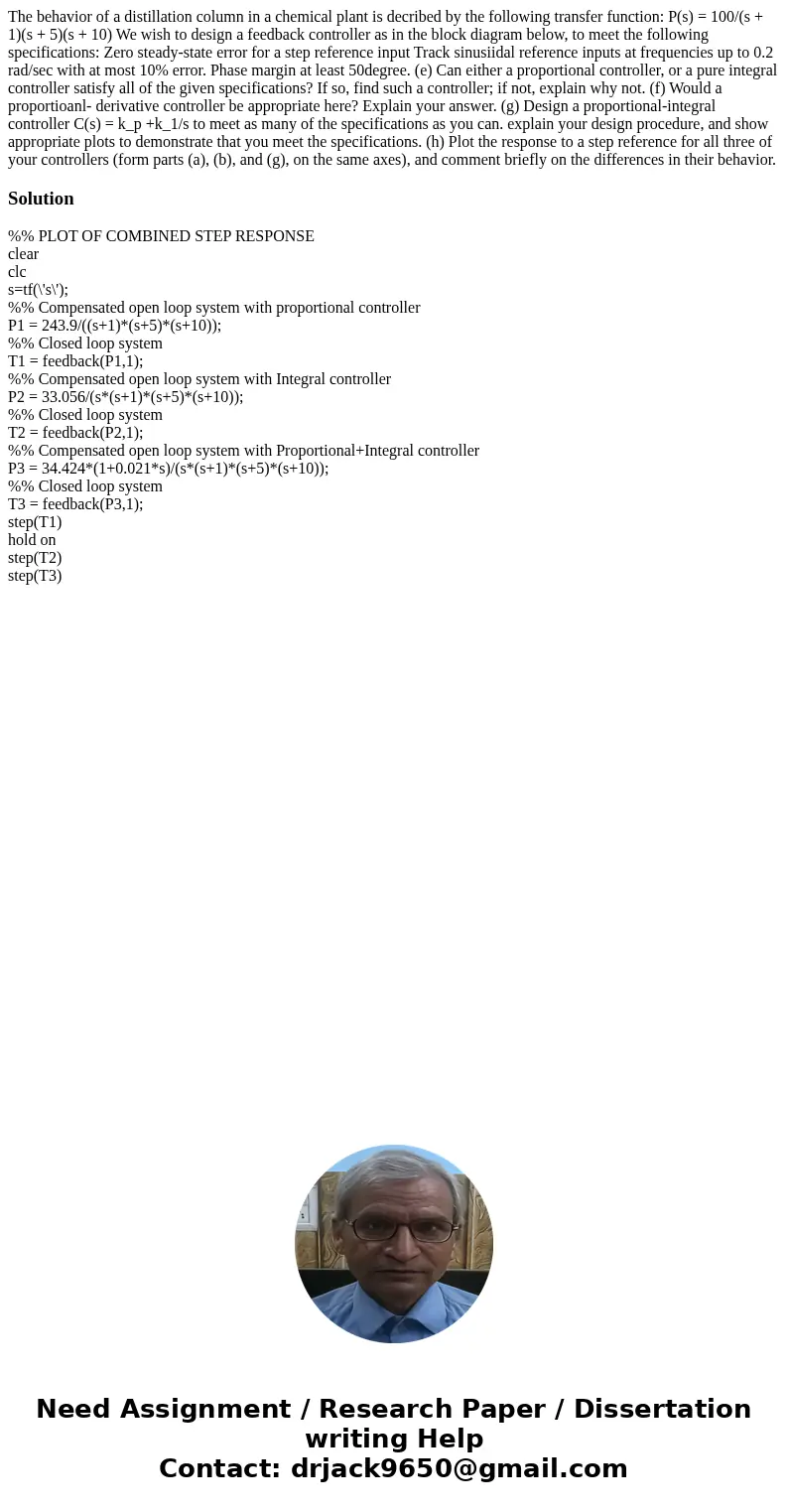The behavior of a distillation column in a chemical plant is
The behavior of a distillation column in a chemical plant is decribed by the following transfer function: P(s) = 100/(s + 1)(s + 5)(s + 10) We wish to design a feedback controller as in the block diagram below, to meet the following specifications: Zero steady-state error for a step reference input Track sinusiidal reference inputs at frequencies up to 0.2 rad/sec with at most 10% error. Phase margin at least 50degree. (e) Can either a proportional controller, or a pure integral controller satisfy all of the given specifications? If so, find such a controller; if not, explain why not. (f) Would a proportioanl- derivative controller be appropriate here? Explain your answer. (g) Design a proportional-integral controller C(s) = k_p +k_1/s to meet as many of the specifications as you can. explain your design procedure, and show appropriate plots to demonstrate that you meet the specifications. (h) Plot the response to a step reference for all three of your controllers (form parts (a), (b), and (g), on the same axes), and comment briefly on the differences in their behavior.
Solution
%% PLOT OF COMBINED STEP RESPONSE
clear
clc
s=tf(\'s\');
%% Compensated open loop system with proportional controller
P1 = 243.9/((s+1)*(s+5)*(s+10));
%% Closed loop system
T1 = feedback(P1,1);
%% Compensated open loop system with Integral controller
P2 = 33.056/(s*(s+1)*(s+5)*(s+10));
%% Closed loop system
T2 = feedback(P2,1);
%% Compensated open loop system with Proportional+Integral controller
P3 = 34.424*(1+0.021*s)/(s*(s+1)*(s+5)*(s+10));
%% Closed loop system
T3 = feedback(P3,1);
step(T1)
hold on
step(T2)
step(T3)

 Homework Sourse
Homework Sourse